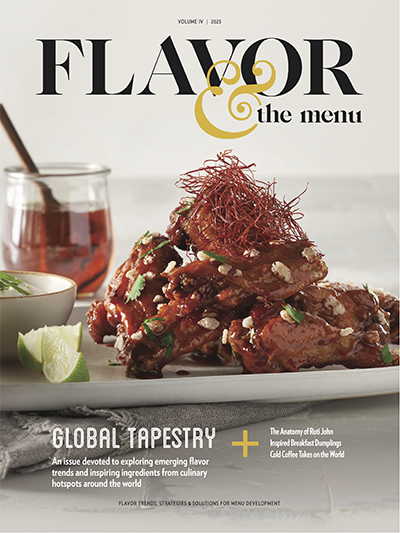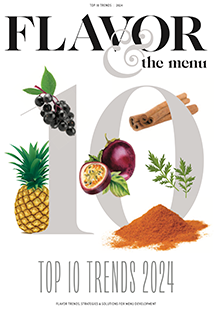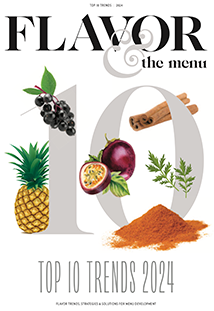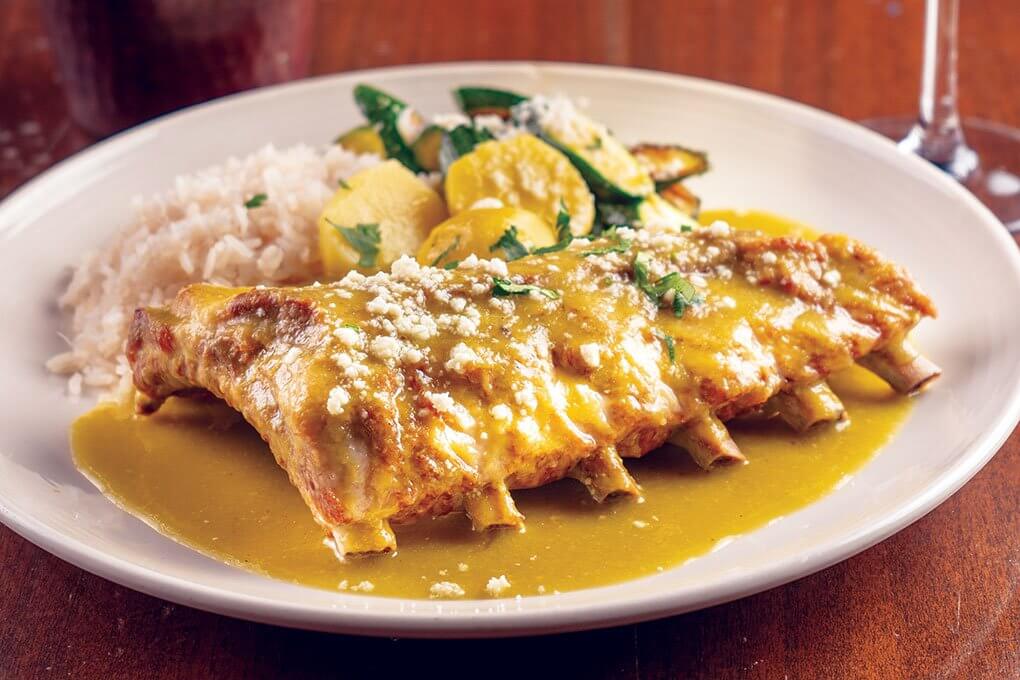
Although much attention is paid to the development of on-trend shareables, bar bites, snacks and appetizers, many restaurant brands still rely on their entrée sections for their bread and butter. Today, successful main dishes need to reflect a similar sensibility seen in the other categories—flavor complexity, inventive textural play and, of course, craveability. We’re highlighting four distinct restaurant concepts that employ smart strategies when it comes to entrée menu development. They introduce flavor touches like burnt honey, roasted lemon, tomatillo salsa and chipotle-infused marinara for memorable differentiation and serious curb appeal.
Classic Improv
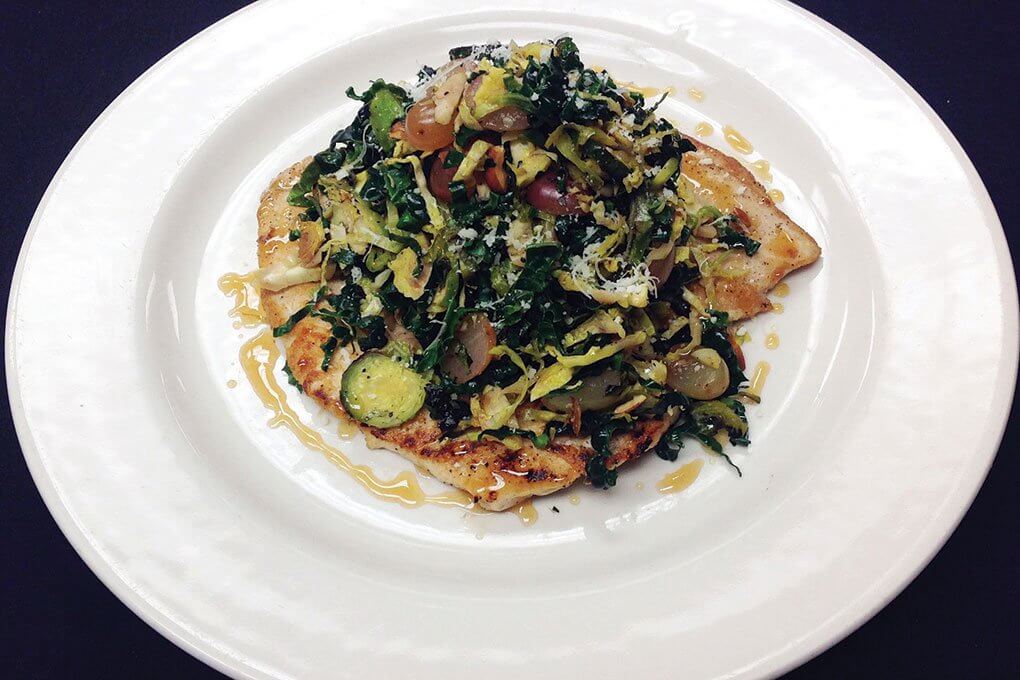
Nordstrom’s Pan-Seared Chicken Paillard with Lacinato kale, Brussels sprouts, pickled grapes, almonds, orange, Parmesan, honey gastrique
The Pan-Seared Chicken Paillard at Nordstrom Restaurants’ concepts Cafe Bistro and Bazille introduces an American seasonal sensibility to the dish. “It comes together by lightly pounding the chicken to tenderize, increase plate coverage, and quickly and evenly cook the chicken,” says Keith Brunell, Corporate Chef. “For prep, we also pre-grill the Brussels sprouts and shave them to provide a smoky char flavor and retain color. Lacinato kale is shaved raw for quick pick up, providing texture and height. Grapes are pickled with coriander to elevate the acidity and intensify the grape flavor.” Toasted almonds add a surprising crunch. Extra-virgin olive oil and burnt honey are infused with tangy lemon and orange zest to create an ‘au naturel’ sauce to provide an elevated aigre-doux flavor.”
Brunell points out the ease of switching out supporting characters for seasonal refreshes. “The beauty of the dish is that the vegetable, fruits and nuts can be switched out based on the growing season,” he says. “The green elements can be raw mustard frills or endive, the nuts can be walnuts or pistachios, grapes can be apricots, plums, currants or even pickled California avocados when in season. And the Brussels can be Romanesco, cauliflower and broccoli. The variations are limitless.”
A Citrus Spin
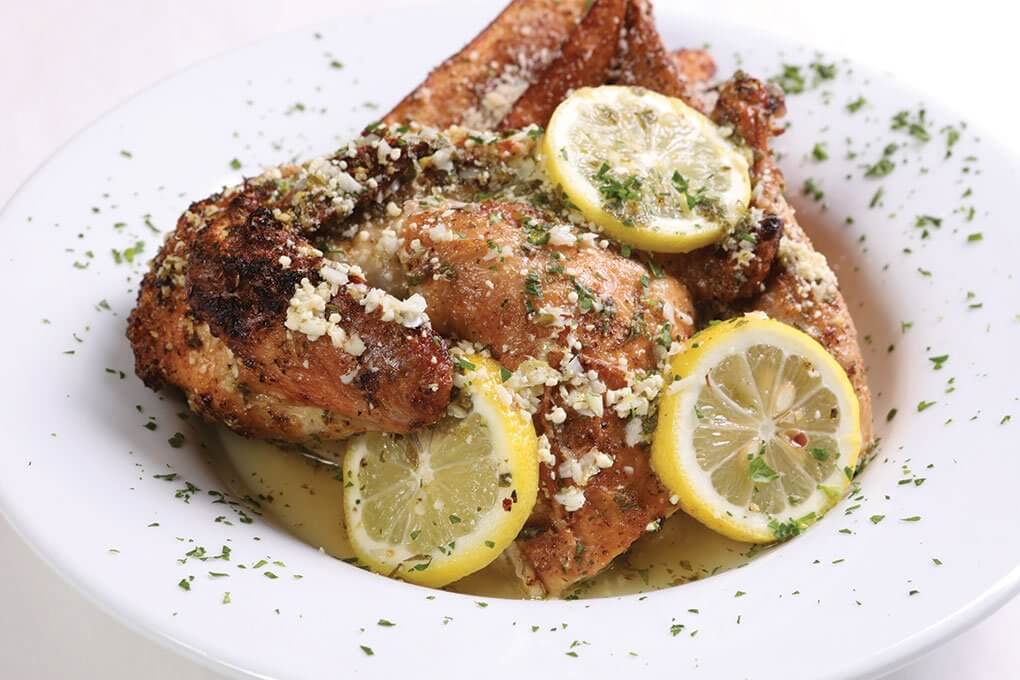
Macaroni Grill’s Sorrento Lemon Chicken: Half chicken, oregano, lemon juice and Parmesan
The bright, clean flavors of citrus are a source of inspiration for Jeffrey Meyer, VP of Culinary at Romano’s Macaroni Grill. “We’ve introduced several items with fresh citrus notes, like our Citrus Chicken Arancini, which really resonated with our guests,” he says. “We built upon that with the Sorrento Lemon Chicken. It was a huge favorite while in test and is now available nationwide for a limited time.”
The Sorrento Lemon Chicken consists of a half chicken, rubbed with oregano, kosher salt, fresh lemon juice and extra-virgin olive oil, then roasted in a brick pizza oven. “While roasting, the chicken is basted with a rich broth of Parmesan, lemon zest, lemon juice, oregano, garlic, EVOO and chicken stock. Three lemon wheels are laid on top, providing the fresh citrus pop inherent to the Amalfi Coast,” says Meyer. It’s served on a bed of oven-roasted russet potatoes seasoned with rosemary, sumac, salt and pepper.
“We wanted to create something with bright, fresh, herbal and citrus flavors for summertime,” he says. “The citrus notes are the star of this dish. Our menu ideation originates from the true Italian way of cooking—a few, simple and authentic ingredients that provide flavor profiles that complement, not overwhelm.”
Braise Me Up

Meso Maya’s Costillas de Cerdo: Braised baby-back pork ribs, roasted creamy tomatillo salsa, potatoes, zucchini, white rice
When a special sells out every time it’s offered, you’ve got a winner on your hands. The Costillas de Cerdo at upscale Mexican restaurant Meso Maya have been moved to the regular menu as a signature item, thanks to that sellout performance. The dish features braised baby-back pork ribs with roasted creamy tomatillo salsa, served with potatoes, sautéed zucchini and white rice.
“The green tomatillo salsa, which has light, mild and tangy flavors, is smothered over fall-off-the-bone, 12-hour-braised, baby-back pork ribs,” says Executive Chef Nico Sanchez. “The overall flavor experience is savory, with a buttery tang from the tomatillo salsa. This dish is inspired by a Mexican guiso, which is an authentic Mexican stew.”
As the flavors work so well, Sanchez is thinking about moving the ribs into more menu items. “We may consider this as an option for our Budin Azteca, which is another signature dish, made with layers of homemade white corn tortillas and melted Chihuahua cheese, Monterey Jack and queso asadero, served with a meat or vegetable of the guest’s choice,” he says.
The Power of Paleo
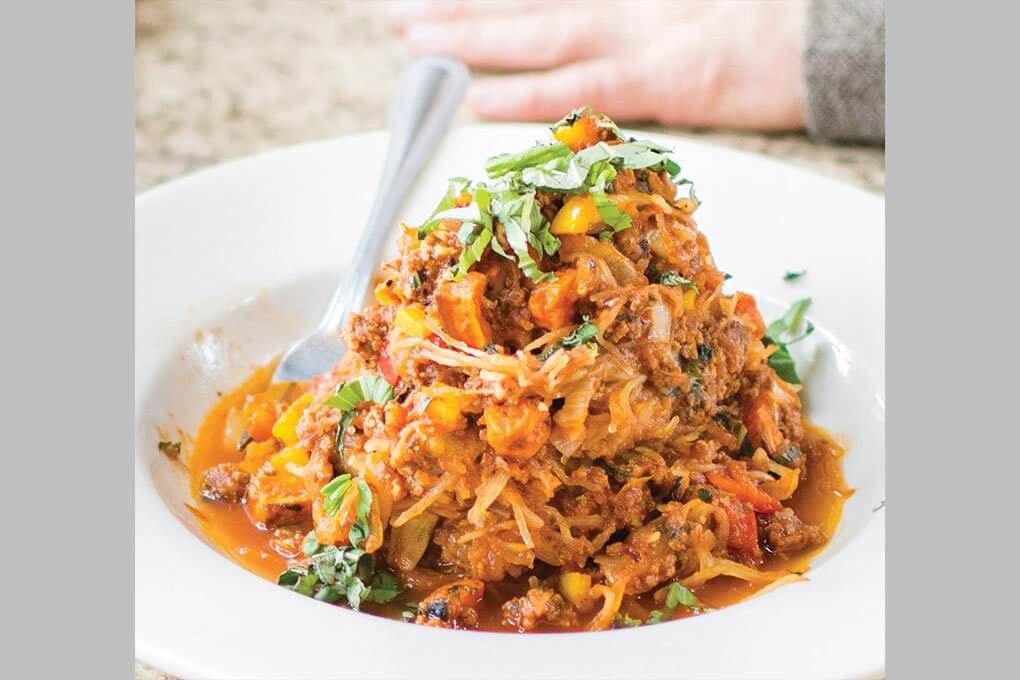
Bellagreen’s Paleo Spaghetti Squash Bolognese
The fast casual Bellagreen stands out with its sound sustainable practices, from its use of alternative power to its water conservation. It also stands out with its ability to modify its American bistro menu to align with a number of today’s biggest diets, including keto, paleo, Whole30, gluten-free and vegetarian.
Its Paleo Spaghetti Squash Bolognese answers a number of dietary needs while delivering a flavorful experience. Spaghetti squash is roasted at 400 degrees, yielding tender “noodles.” They’re tossed in a chipotle pepper-infused marinara sauce of roasted vegetables and browned all-natural ground beef, then finished with fresh basil and optional Parmesan. “Bellagreen’s Paleo Spaghetti Squash Bolognese is an exceptional experience in flavor,” says Kyle Frederick, COO. “We believe guests shouldn’t have to compromise flavor for their dietary needs or preferences.” Introduced as a seasonal item, the dish was such a hit, it’s now on the permanent menu. “The Bolognese is a light dish that’s low in carbohydrates, but you’d never know from the way it tastes,” says Frederick. “We’ve found that even guests who aren’t gluten-free love it for its rich flavor and hearty texture.”
.

